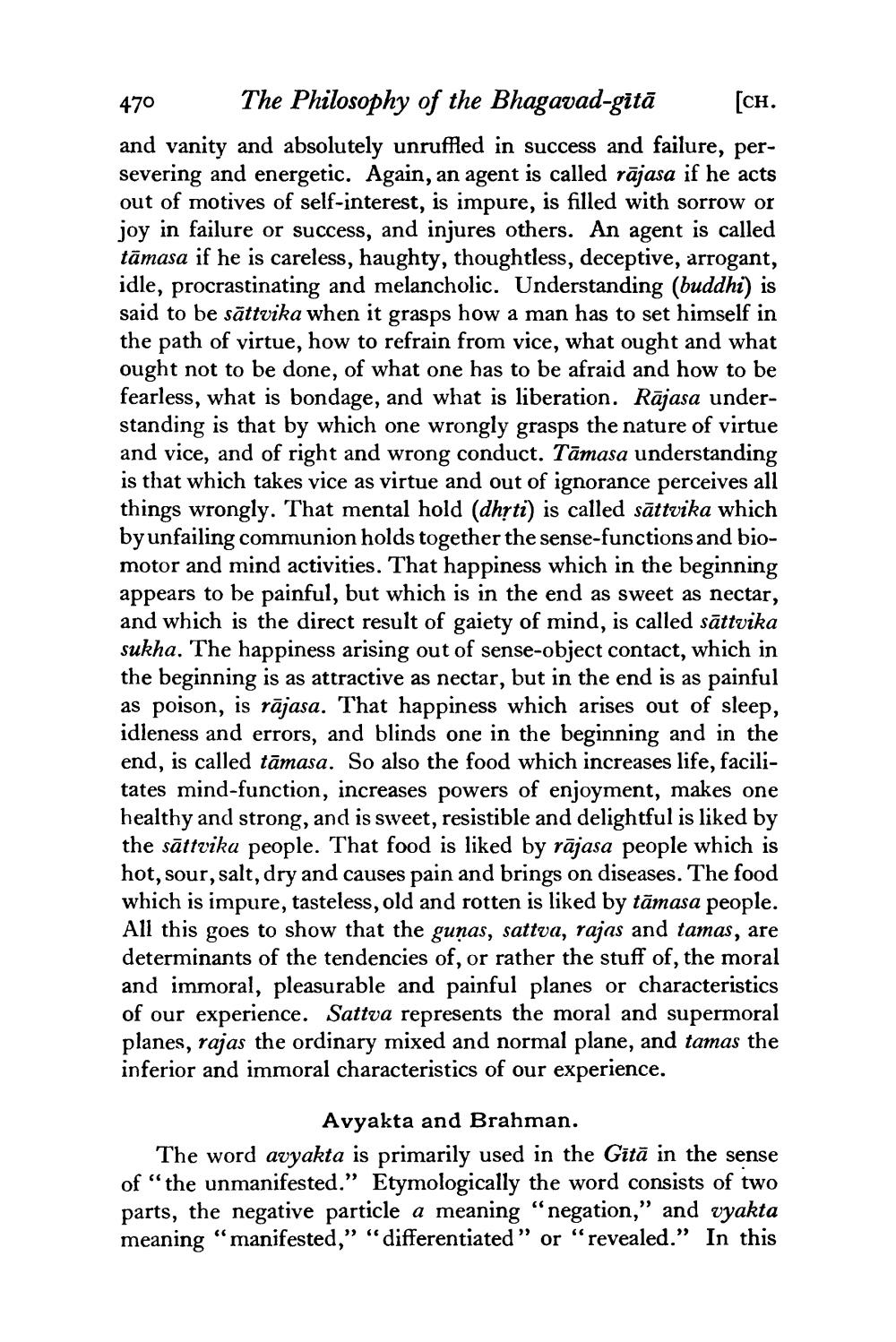________________
470
The Philosophy of the Bhagavad-gitā
[CH.
and vanity and absolutely unruffled in success and failure, persevering and energetic. Again, an agent is called rājasa if he acts out of motives of self-interest, is impure, is filled with sorrow or joy in failure or success, and injures others. An agent is called tāmasa if he is careless, haughty, thoughtless, deceptive, arrogant, idle, procrastinating and melancholic. Understanding (buddhi) is said to be sättvika when it grasps how a man has to set himself in the path of virtue, how to refrain from vice, what ought and what ought not to be done, of what one has to be afraid and how to be fearless, what is bondage, and what is liberation. Rājasa understanding is that by which one wrongly grasps the nature of virtue and vice, and of right and wrong conduct. Tamasa understanding is that which takes vice as virtue and out of ignorance perceives all things wrongly. That mental hold (dhṛti) is called sättvika which by unfailing communion holds together the sense-functions and biomotor and mind activities. That happiness which in the beginning appears to be painful, but which is in the end as sweet as nectar, and which is the direct result of gaiety of mind, is called sättvika sukha. The happiness arising out of sense-object contact, which in the beginning is as attractive as nectar, but in the end is as painful as poison, is rājasa. That happiness which arises out of sleep, idleness and errors, and blinds one in the beginning and in the end, is called tāmasa. So also the food which increases life, facilitates mind-function, increases powers of enjoyment, makes one healthy and strong, and is sweet, resistible and delightful is liked by the sättvika people. That food is liked by rājasa people which is hot, sour, salt, dry and causes pain and brings on diseases. The food which is impure, tasteless, old and rotten is liked by tāmasa people. All this goes to show that the gunas, sattva, rajas and tamas, are determinants of the tendencies of, or rather the stuff of, the moral and immoral, pleasurable and painful planes or characteristics of our experience. Sattva represents the moral and supermoral planes, rajas the ordinary mixed and normal plane, and tamas the inferior and immoral characteristics of our experience.
Avyakta and Brahman.
The word avyakta is primarily used in the Gita in the sense of "the unmanifested." Etymologically the word consists of two parts, the negative particle a meaning "negation," and vyakta meaning "manifested," "differentiated" or "revealed." In this




